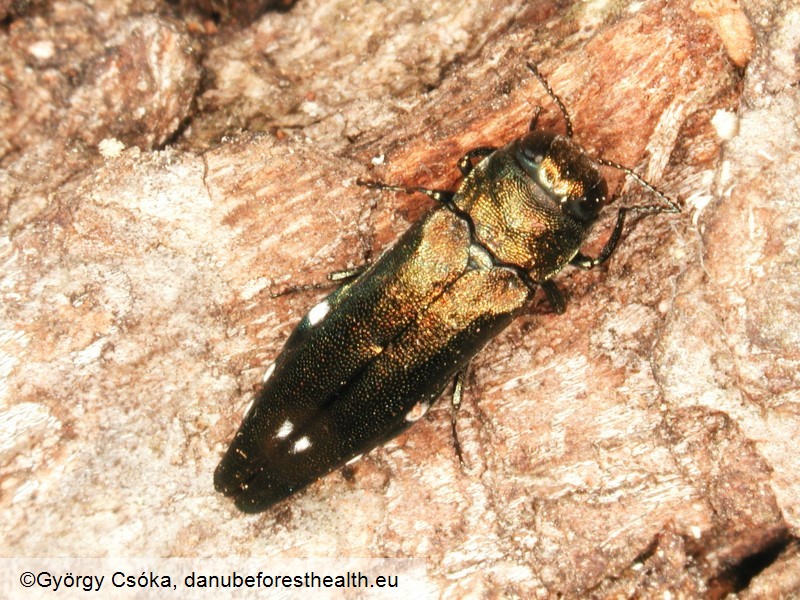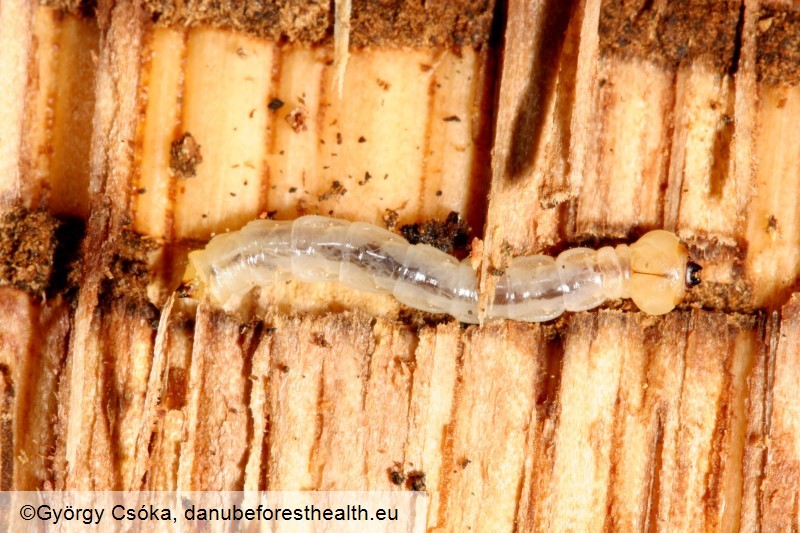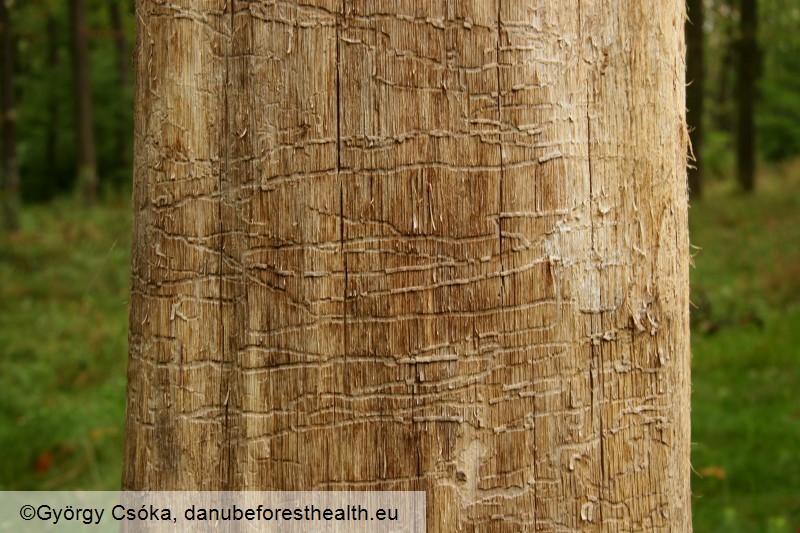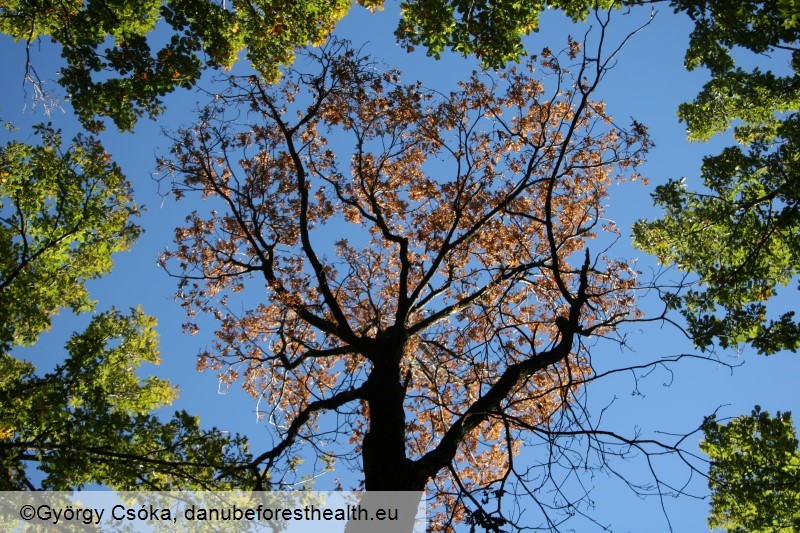Animalia
Two-spotted oak borer
Agrilus biguttatus
Maarten de Groot
|
|

Fig. 1. Adult of Agrilus biguttatus

Fig. 2. Larva of Agrilus biguttatus

Fig. 3. Galleries on an oak tree of Agrilus biguttatus

Fig. 4. Canopy of a dying tree due to attack Agrilus biguttatus
DETECTION PERIOD:
May-July (flight period), May-October (damage)
DESCRIPTION:
The adult is a large buprestid beetle (8.5 to 13 mm) with yellow green color and has a pair of white spot on the inner side of the elytra. The larvae has a typical shape of a buprestid beetle with a first few segments widened while others are narrow and is creamy white colored. The clusters of eggs are laid in the cracks of the bark. Significant damage to the trees are the zig-zag galleries under the bark. This can cause yellowing of the leaves or kills of the trees. When adults are exiting the trees it produces a typical D-shaped exit hole.
HABITAT:
On most oaks in natural habitats, nurseries, plantations and urban areas. But it also occurs on beech (Fagus sylvatica) and chestnut (Castanea sativa). It mainly occurs in trees with a DBH larger than 30 cm.
STATUS:
The species occurs in most of the Refocus study area. It is commonly found in Austria, Croatia, Hungary, Serbia and Slovenia.
IMPACT:
The two-spotted oak borer is attacking stressed trees. Larvae are girdling the trees and therefore cutting the tree off of its resources. The oaks in Europe are important forest and ornamental plants. It is one of the factors contributing to the oak dieback in Europe.
SIMILAR SPECIES:
Other buprestid beetles of the genus Agrilus. The adults of the two-spotted oak borer are one of the largest species of Agrilus and is the only species with a pair of white spots. Larvae can only be distinguished with a stereo microscope. When found in beech, this species can be easily confused with Agrilus viridis larvae. However, adults of Agrilus viridis are the same size, but do not have the pair of white spots.
|